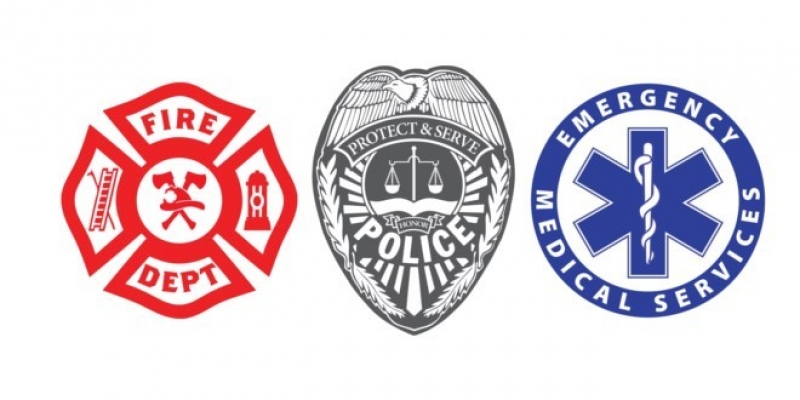
The public safety in-building wireless communication space has been driven by codes and standards since they were first introduced in 2009. These systems ensure first responders can communicate in every building area, including critical coverage areas like fire command rooms, exit stairwells, elevator lobbies, basements, and exit passageways.
However, this process is anything but “standard,” with system installation requirements that are ever-changing and subject to interpretation. Building owners can’t obtain a certificate of occupancy without wireless first responder communication systems that meet the interpretations of the authority having jurisdiction (AHJ) in their respective regions.
Thus, it’s important for them to stay up-to-date by knowing where to view the relevant codes and how to interact with AHJs. Below is a quick guide to understanding the nuances of navigating the public safety wireless communication landscape.
What Are The Main Building Codes To Follow, And What Updates Matter?
There are three main codes that building owners must follow to meet the standards for the installation, maintenance, and use of emergency services communication systems. They are updated every few years and enforced by respective AHJs across the country.
The first is the International Code Council’s (ICC) International Fire Code (IFC) 2018, Section 510, which explains the latest requirements for the in-building emergency radio systems. IFC is on a three-year code cycle with 2018 being the latest, but IFC-2021 is currently being reviewed and approved.
The second is the National Fire Protection Association (NFPA), which has multiple chapters/sections relevant to in-building wireless communication requirements. NFPA 1, section 11 or 101, generally discusses the public safety requirements for two-way radio communication enhancement systems and minimum signal strength needed for fire department communications in new and existing buildings. NFPA 72 covers fire alarm and signaling codes, with chapter 24 specifically covering emergency communication systems. NFPA 1221 Section 9.6 (soon to be NFPA 1225 due to consolidation efforts taking place) addresses the requirements for two-way radio communications enhancement systems, and NFPA 70 covers the national electric code requirements.
Lastly is the Federal Communications Commission (FCC) part 90 rules and certification testing for radio products that are used in defined bands for public safety services.
One of the new standards is Underwriter Laboratories’ (UL) UL2524, which is designed to make two-way emergency radio communication systems safer and more reliable for first responders. It currently covers repeaters, annunciators and battery backups (BBU) but will eventually expand to cover fiber systems and other wireless communication products.
UL2524 will be significant in helping building owners and AHJs easily align on compliance as more original equipment manufacturers (OEMs) become listed and are therefore easy to identify for use in in-building public safety systems. This will ensure the new UL2524-listed first responder systems are certified to be code compliant and meet the stringent and comprehensive testing requirements, as detailed in the UL2524 Standard for Safety for In-building 2-way Emergency Communication Enhancement Systems, Second Edition. This will help streamline the fire marshal approval process for acceptance testing, allowing building owners to more quickly receive their certificate of occupancy.
Engaging With Your AHJ
Earlier, I specified the codes that building owners must be aware of in order to ensure their public safety communication system is compliant. While the codes provide the minimum set of requirements, it’s up to the AHJs to interpret and enforce them, which vary widely across jurisdictions. You also must confirm what code year the jurisdiction is currently enforcing, since some are still using 2010! The AHJ is typically a fire marshal or chief but can also be an electrical inspector, labor or health department — and a number of other entities or professionals at the local, state, and federal level.
All public safety deployments begin and end with AHJ inspection and approval, so it’s important to include them early and often in the decision about which requirements to follow and components to use. For example, beyond the main codes, there are many local addendums that could affect the compliance of a public safety system.
Some areas of California now require passive component monitoring, while that isn’t the case in most other states and jurisdictions across the country. In Washington, DC, and San Francisco, the AHJ requires emergency power off (EPO) capabilities for the bi-directional amplifier and/or battery back-up system to protect macro networks from excessive noise that could degrade the system and cause communication issues. In Washington, DC, the AHJ also requires monitoring of the emergency responder communication systems. Even when the system is accepted and the certificate of occupancy is issued, many AHJ’s require annual maintenance checks to ensure it continues to operate at code-acceptable levels for first responders.
Beyond this, there are other significant differences based on code interpretation that can directly impact a wide range of installation factors, from usable equipment to the way the system is implemented, which can drastically alter costs. This is most apparent in the case of fire-rating and pathway survivability. The NFPA code year that the AHJ enforces influences the type of casing and equipment protection required throughout a building.
Depending on the level of pathway survivability, owners must use a metallic raceway to protect the cables or use fire-rated enclosures that can survive fires for up to two hours. Newer codes allow more flexibility in options to meet these requirements. Instead of a metallic raceway, which offers hard-fixed protection, some jurisdictions allow for flexible metal jackets around the cable that can speed deployment and reduce the amount of cabling and conduit. By understanding these compliance nuances at the onset of a project, building owners can mitigate the chances of delays at the end of the project and associated costs.
Although systems integrators perform most of the legwork for installing emergency communication systems in buildings, it’s important that building owners have a well-rounded understanding of how to interact with AHJs and keep up with the code updates instead of relying on a third party. This knowledge can help streamline deployment and provide a better pathway to receiving the certificate of occupancy for their building.
https://www.forbes.com/sites/forbestechcouncil/2020/09/15/a-building-own...
